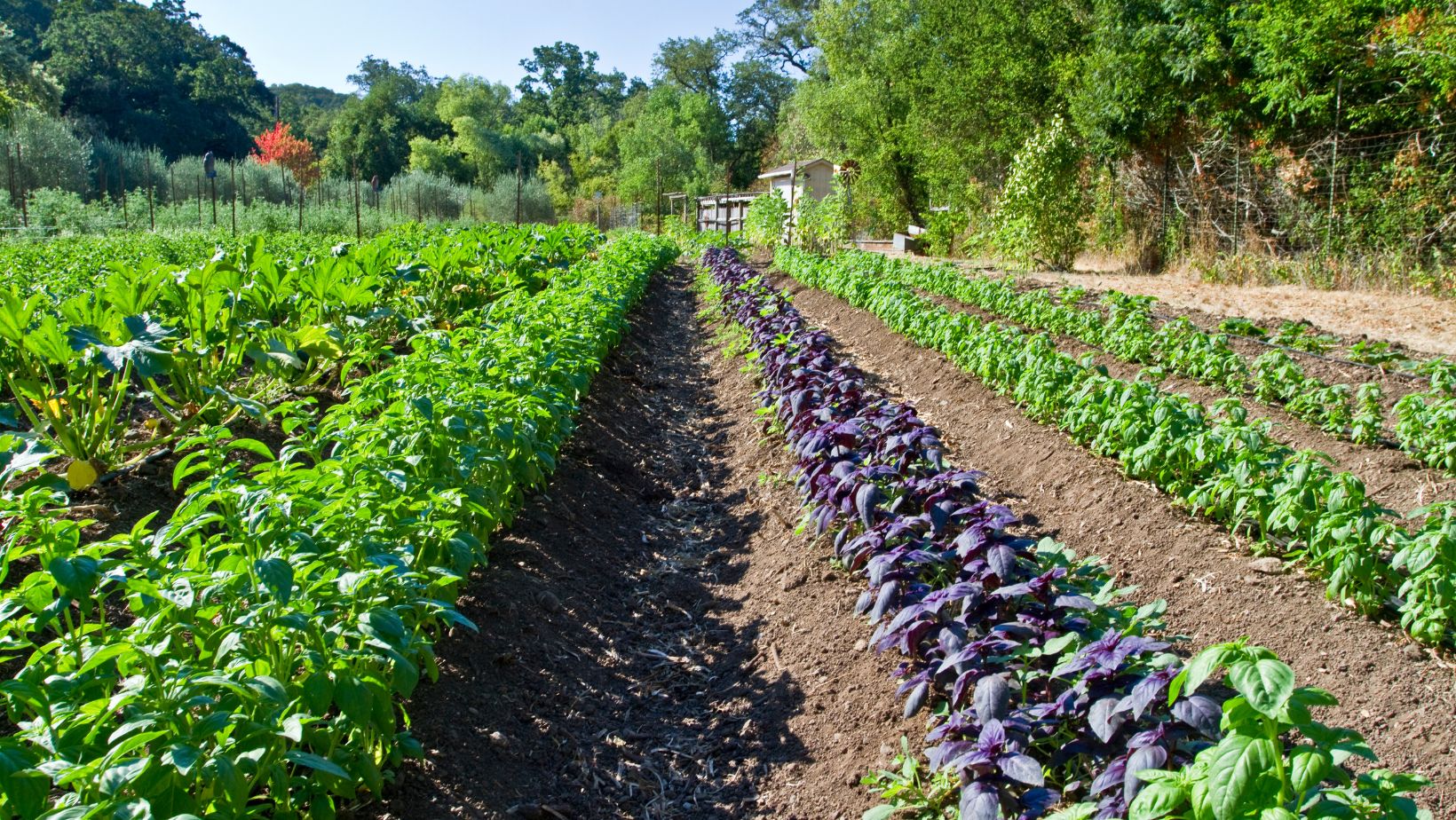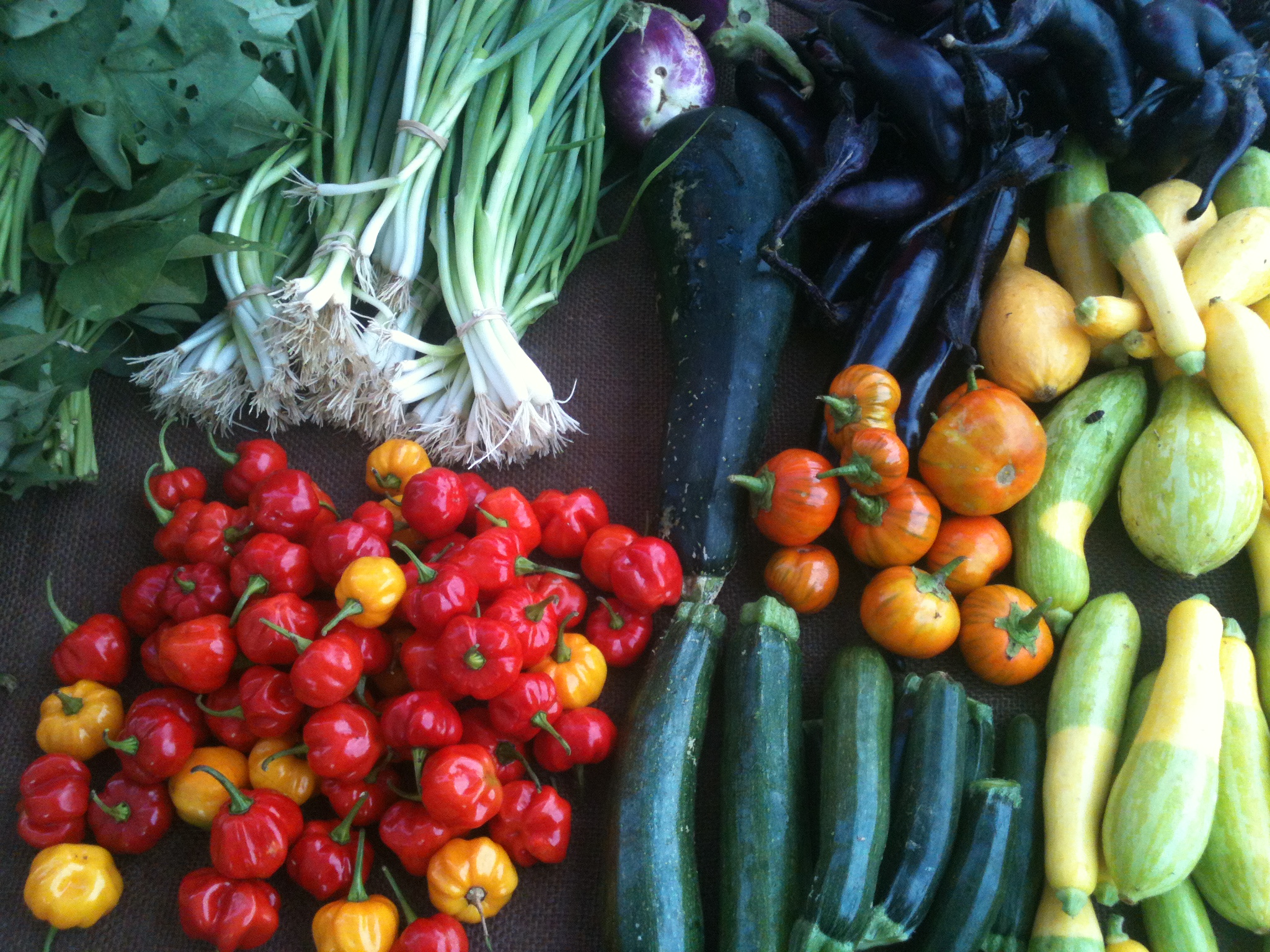Explore Our Resources
All Resources
Cultivating a Greener Future: The Role of Climate-Smart Agriculture Programs
 April 6, 2024
April 6, 2024
Cultivating a Greener Future: The Role of Climate-Smart Agriculture Programs
Farmers face unprecedented challenges where climate change is leading to erratic weather patterns, shifting growing seasons, and extreme weather events. Climate-smart agriculture offers hope amidst these challenges. By implementing practices that enhance soil health, conserve water, and promote biodiversity, farmers can adapt to changing conditions, mitigate greenhouse gas emissions, and build a more resilient food system for future generations. Learn more about the programs and partnerships that can help you.
Microledon Farm, Conservation Planning, and a Third Perspective
 March 6, 2024
March 6, 2024
Microledon Farm, Conservation Planning, and a Third Perspective
Oscar Chavez's first year of farming was extremely challenging, with poor production, and his wife challenged him to “make farming more profitable within a year or keep it as a hobby.” Technical assistance from CFSA helped him find his feet. Read more about Oscar's journey in Jamie Rye's article.
Forced-Air Cooling for Crop Storage
 February 6, 2024
February 6, 2024
Forced-Air Cooling for Crop Storage
To reduce loss and improve the storage quality of high-value crops, consider adding a forced-air cooling system or pre-cooler. Although forced-air technology has been a staple for larger operations dealing in fruits and vegetables for decades, it isn’t often presented as a practical tool for smaller-scale growers. But with a few simple pieces of equipment, almost any grower can add forced-air cooling to their post-harvest process.
Read Jay Dunbar's expert tip: Forced-Air Cooling Is Economical & GAP-Friendly.
Analysis of the Strengthening Organic Enforcement Rule
 December 8, 2023
December 8, 2023
Analysis of the Strengthening Organic Enforcement Rule
The U.S. Department of Agriculture’s Strengthening Organic Enforcement (SOE) rule has proven to be one of the biggest changes to the National Organic Program since its inception. Designed to protect organic integrity and bolster farmer and consumer confidence in the USDA organic seal, the rule targets organic control systems, farm-to-market traceability, import oversight authority, and enforcement of organic regulations. Organic supply chains have become increasingly complex, and the SOE was crafted out of an effort to increase transparency in the organic market.
So what does this rule mean that mean? Read the analysis over on our blog or in a downloadable PDF.
Addressing Gaps in Organic Education
 November 28, 2023
November 28, 2023
Addressing Gaps in Organic Education
While there continues to be a wealth of resources on the organic certification process available to producers, the amount and time-consuming nature of paperwork required to achieve and maintain certification continues to be daunting and is routinely cited by producers as the primary barrier to certification.
Non-profit organizations at the state, regional, and federal level provide organic certification consulting for conventional farmers transitioning to certified organic, beginning farmers interested in organic certification, and farmers interested in using organic production practices in general. These resources include on-farm visits, transition and production handbooks, and more.
Read more about organic education and processes for growers.
Weed Suppression Using Silage Tarps
 November 7, 2023
November 7, 2023
Weed Suppression Using Silage Tarps
One way to combat this weed takeover is by using silage tarps to create a stale seedbed. Silage tarps are UV-rated plastic tarps that are black on one side and white on the other. They come in various sizes and can be cut to cover any area. Cutting the tarps also makes them easier to manage; large ones can be pretty heavy with a bit of water on them. Read more about Dylan's experience and advise on using silage tarps for weed control.
Climate-Smart Farming – A Passing Phase or Farming Reinvented?
 October 6, 2023
October 6, 2023
Climate-Smart Farming – A Passing Phase or Farming Reinvented?
Here in the Carolinas, our diverse landscapes span from coastal plains to beautiful mountain ranges. We are seeing shifts in temperature, precipitation patterns, and more extreme weather events that continue to alter the farming landscape. Rising temperatures influence traditional planting and harvesting times, and warmer winters disrupt the chilling hours needed for our abundant fruit crops. Heat stress during the growing season affects crop growth, quality, and yield, ultimately impacting the farmer's bottom line. One of the most pronounced effects we are seeing is in the precipitation patterns. Increased rainfall and more frequent intense storms lead to soil erosion, nutrient run-off, and waterlogging, while decreased rainfall leads to severe periods of drought where water management strategies are becoming necessary to save our crops.
Climate-smart farming practices are gaining awareness and importance as potential solutions to these challenges. Cover cropping, reduced tillage, crop rotation, water conservation, and the use of technology are essential strategies for maintaining soil health, preventing erosion, and sequestering carbon.
Read the full article on Climate-Smart Farming by Kim Butz.
The State of Organic Markets in the Carolinas
 October 5, 2023
October 5, 2023
The State of Organic Markets in the Carolinas
Organic sales in the Carolinas and throughout the United States continue to be driven by increasing consumer demand despite the obstacles to organic production faced by farm and livestock operations. This growing sector results in a substantial economic impact, but policy solutions are needed to protect this growing sector.
What does the big picture look like?
Read our report on The State of Organic Markets in the Carolinas, or download a copy of it for your reference.
Secondhand High Tunnels
 September 27, 2023
September 27, 2023
Secondhand High Tunnels
Have you ever seen a vacant high tunnel, greenhouse, or cold frame and considered asking to purchase it? You’re not alone! Purchasing and reusing secondhand high tunnels is common and a great way to make new use of an otherwise wasted space.
Before jumping in headfirst on the purchase, there are a few things to consider. In this newly-created fact sheet, we walk you through what to consider before purchase, as well as how to dismantle and reinstall a standing high tunnel.
Want more? Download the fact sheet.
What Egg Producers Need to Know About Safe Handling Practices and the Law
 September 26, 2023
September 26, 2023
What Egg Producers Need to Know About Safe Handling Practices and the Law
Raising poultry for eggs is common for many small farms and homeowners. Adding egg layers to your farm can be a profitable way to diversify your farm business, or you may just raise eggs for your own use. In either case, egg producers need to know how to safely handle poultry and eggs to minimize the risks of foodborne illness. If you sell eggs, you also need to know the laws and regulations that apply to your operation.
Keep reading Sara Runkel’s expert tip: What Egg Producers Need to Know About Safe Handling Practices and the Law
Making Amendments Work for You and Your Soil
 September 26, 2023
September 26, 2023
Making Amendments Work for You and Your Soil
When considering what soil amendments might suit your crop needs, basic soil health can sometimes be overlooked, especially during peak season when time is limited. It’s essential to consider overall soil health in your fertility management planning for many reasons, including; reducing erosion, maximizing water infiltration, drainage, and aeration, improving nutrient cycling, increasing nutrient availability, improving structure, spending less money on inputs, and ultimately increasing overall resiliency in the soil.
Keep reading Amelia Bruss’s expert tip: Making Amendments Work for You and Your Soil
Managing the Tomato Fruitworm in the Carolinas
 September 26, 2023
September 26, 2023
Managing the Tomato Fruitworm in the Carolinas
The Carolinas are especially susceptible to the tomato fruitworm. Fruitworms can overwinter as pupa in the top few inches of soil, making them present and problematic for the entire growing season. Don't miss Sylvia Reed's article outlining the main identifiers of the tomato fruitworm and different sustainable management strategies growers can use to minimize the negative impact of this pest on their crops.
Managing Soil pH on Your Farm
 September 26, 2023
September 26, 2023
Managing Soil pH on Your Farm
Only a soil test can indicate whether the pH is accurate, and the right level really depends on the plant you want to grow and the natural pH of your soil. Fruits and vegetables accept a wide range of soil pH levels, and acidifying soil is generally unnecessary and not recommended. For more tips on Soil Ph, read Marcus' expert tip.
Year Round Successful Transplant Production
 February 23, 2023
February 23, 2023
Year Round Successful Transplant Production
All farmers and gardeners must decide whether to grow their own or purchase transplants. This decision is made considering several factors, including equipment needs, supply needs, the number of transplants needed, time of year, and price. There are a few people out there who, against all odds, can generate beautiful transplants year-round without fancy equipment. From my experience, those people are few and far between. The rest of us are forced to invest in a greenhouse or other supplies, grow our own, or buy them and save ourselves the trouble of it all. Whatever decision you make, below are some tips to help you be successful.
Read on for tips on growing successful transplants.
What Market Is Right For Me?
 February 23, 2023
February 23, 2023
What Market Is Right For Me?
Starting a farm is one of the hardest things you will ever do. In addition to being responsible for producing many varieties of fruits and vegetables, you will need business acumen to market and sell your products successfully. Deciding where to sell is as important as deciding what to sell.
Read this expert tip by Geoff Seelen: What Market Is Right for Me?
The Benefit of Agroforestry and Where to Start
 February 23, 2023
February 23, 2023
The Benefit of Agroforestry and Where to Start
What is agroforestry? The USDA National Agroforestry Center defines it as ‘the intentional mixing of trees and shrubs into crop and/or animal production systems to create environmental, economic, and social benefits.
Odds are that you may already be practicing agroforestry on your farm without knowing it! Utilizing trees and shrubs on your farm can be a great way to enhance the environment, maximize under-used space, and bring in additional income.
Read all about Agroforestry in Gena Moore's expert tip: The Benefit of Agroforestry and Where to Start
Soil Health for Crop Producers in the Southeast: 5 Management Priorities
 February 23, 2023
February 23, 2023
Soil Health for Crop Producers in the Southeast: 5 Management Priorities
The idea that farmers should manage their land and crops for soil health is not a new one but has been gaining popularity and permeating mainstream farming over the last decade. There are advocates all across the board: from small-scale, organic vegetable farmers, large-scale conventional grain producers, and livestock farmers to permaculturists and so on.
Read our five management priorities for improving soil health, tailored to our Southeastern soils.
Sales Forecasting: The Right Price for the Right Product
 February 23, 2023
February 23, 2023
Sales Forecasting: The Right Price for the Right Product
What is the guarantee that an idea for a business will work out in your favor? The answer is rarely straightforward, but there are steps you can take to mitigate the risks of entering a new market. For instance, conducting sales forecasting for each product you wish to sell is advisable. This isn’t as hard as it sounds; you could save yourself some severe financial losses by building your business around what the market demands.
Rye Termination Timing
 February 23, 2023
February 23, 2023
Rye Termination Timing
How to know when to crimp
Interested in no-till production, but unsure of how to manage cover crops so they don’t become a problem for the crop that follows?
The most common management concern is when to crimp your cover crop to get a good kill but prevent it from setting seed. Getting the timing right on crimping small grain cover crops like rye isn’t difficult, but it does take a little attention to its growth stage. See this three-minute video for a quick run-down on which stages to look for in order to get that timing right.
Comparing No-Till Methods & Equipment for Different Scales
 February 23, 2023
February 23, 2023
Comparing No-Till Methods & Equipment for Different Scales
This fall, we completed the second year of CFSA’s organic no-till project, determining production costs, yields, profitability, and scalability of growing no-till butternut squash after a cereal rye cover crop. We used several cover crop and weed management methods that were implemented using a tractor, walk-behind tractor, or done manually.
If you want to dig into our findings, don't miss Comparing No-Till Methods & Equipment for Different Scales


